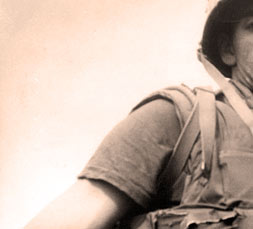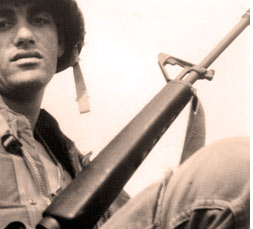|
 |
 |
 |
|||
|
Atrocities and artless innocence
The Village Voice, February 3, 1972 (In response to the Whitney Museum showing) One of the strongest film indictments yet produced of our civilizing role in Vietnam was at the Whitney last week; it is a film that must be shown in prime evening time on national television, and never will be. "Winter Soldier" is a feature-length documentary of the historic, terrifying testimony given by more than 200 ex-GIs at the 1971 Detroit Winter Soldier Investigation concerning American-atrocities in Vietnam and renders academic any disputes as to the relative effectiveness of word as against image. There is simply no substitute for seeing the faces of the men as they testify, their strain, tears, hesitations, artless innocence— all inexorable guarantors of veracity, none available from a reading of the testimony. The enormity of our genocidal passion is recounted here in factual, chilling detail, resembling a criminal, cosmic jigsaw puzzle, any tiny part of which simultaneously contains within itself the totality of the over-all horror. One after another, these veterans of crime recount their experiences in the acts of accusation and expiation; the testimony of these long-haired, intense young men implicates them as well; and judicious intercutting of old photographs showing them in crewcut and uniform further solidifies this theme and broadens it to one potentially encompassing all of us, given only our presence at the right time and place. Authenticity and horror are built with small precise details. An American officer advises his men not to count prisoners at the beginning of their removal in American planes, only upon arrival. A woman is split open from vagina to neck. A small child is stoned to death for taunting the Americans. The effect of the testimonials is enhanced by intercutting of color slides and live footage of tortures, killings, burnings, bombings— images otherwise hidden away by the hundreds and thousands of feet in film libraries of television networks and never seen. They show pitiful, enormously frightened, totally disoriented human beings, delicate and small in build, violated and murdered by massive, huge Westerners who seems to look like men from outer space, dropped by evil machines to rain destruction on their ancestral lands. All the "cliches" are there— the crying mother displaying a maimed child, the aged grandparents herded off, the civilians crouching in unbelievable fear in bulrushes, ineffectively hiding from helicopters in which one of the monsters actually films their plight. One feels frightened at the thought of untold thousand others patiently waiting in television vaults to be stirred into pitiful life by future researchers, an accusing army of corpses that we will never surmount. Far from being a horror show or propagandistic exercise, however, the film, by the very enormity of what it portrays, becomes a philosophical setpiece, raising all the basic moral issues; the mechanisms by which "ordinary" people become torturers and killers, the inability to feel the suffering of others, the possible inevitability of violence and murder in human affairs, the capability of all-encompassing evil on the part of everybody. It postulates self-protection, the need to maintain personal sanity, the urge for revenge, as premises for total indifference toward the "enemy"; and asks unvoiced, insistent questions as to the irreversible damage this war has already done to American civilization. Filmically, the work is a symptomatic example of content triumphing over form. While sound is on a professional level, the camera skips too rapidly from face to face (sometimes not even showing the particular narrator) and editing never surmounts simple juxtapositions or chronological transitions. The profound effect on the spectator by one particular GI shown repeatedly, whose background and formation are more thoroughly gone into, indicates what could have been done. The reviewer of such a film is always faced with the dilemma of attempting to delineate the artistic component of what is primarily a social artifact, whose informational content outweighs its artistic merits. And yet the sheer power of subject matter, the profound weight of revelation is such that it sweeps aside all limitations and transforms the work into a deeply moving absolutely necessary experience. The great and ultimate stars of the film are the tears shed by men who have learned that to destroy the false machismo instilled by school, state, and army, it is necessary to learn how to cry. Through the depth of their tearful misery, openly expressed, they reveal the true essence of a masculinity which, for the first time, is human. At the end, an American Indian slowly, painfully establishes a congruity between our Vietnamese crimes and those perpetrated against his race and then refers to a frequent phase in the broken treaties between white and yellow men: "When we made treaties long ago, they were for as long as the grass shall grow and as long as the rivers shall flow..." he stops and continues haltingly, "...The way we are going now, some day the grass ain't going to grow and the rivers aren't going to flow..." Then he breaks down, on camera, a grown man, and cries. It is an unbearable moment.
|
MORE REVIEWS
Sometimes the small incidents are the most gripping film
You will remember it for the rest of your life |
||||
|
|||||